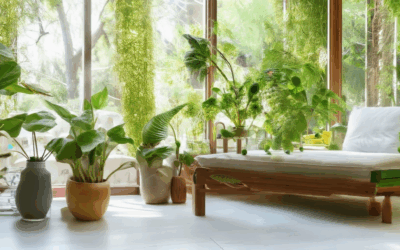Energy efficiency is a cornerstone of modern living, offering significant benefits that extend beyond just cost savings. When it comes to selecting appliances for your home, choosing energy-efficient options isn’t just about conserving resources—it’s a smart investment in sustainability and long-term financial stability. From reducing your electricity bill to minimizing your carbon footprint, energy-efficient appliances play a vital role in creating a more sustainable lifestyle. In this article, we’ll explore the top energy-efficient appliances, the tax credits and rebates available, and the broader environmental impact of making eco-conscious choices. Whether you’re looking to upgrade your kitchen, laundry room, or home entertainment system, understanding the benefits and trends in energy efficiency will empower you to make informed decisions that align with your values and goals. Stay tuned as we dive into the future of energy-efficient technology and how it’s shaping the way we live.

Most Energy-Efficient Appliance Types
When evaluating energy efficiency in household appliances, several factors come into play, including energy ratings, features, and usage patterns. Here’s a breakdown of some of the most energy-efficient appliance types:
1. Refrigerators
Refrigerators are among the most energy-intensive appliances in a home. Look for models with improved insulation and better door seals, as these can significantly reduce energy consumption. Many modern refrigerators also feature smart technology, allowing users to monitor and control energy usage remotely.
2. Dishwashers
Dishwashers with shorter wash cycles and higher water pressure are generally more energy-efficient. Some newer models also use steam cleaning, which consumes less hot water compared to traditional cycles.
3. Washing Machines
Modern washing machines often come with features like steam cycles and condensing drying, which use less water and energy. High-efficiency models rated at 4 stars or higher by ENERGY STAR are excellent choices.
4. Dryers
Condensing dryers are more energy-efficient than traditional vented dryers because they reuse exhaust heat to reduce moisture and energy loss. Many newer models also offer smart controls for optimized drying times.
5. Ovens
Electric ovens with convection cooking tend to be more energy-efficient than gas ovens due to their ability to distribute heat more evenly. Look for models with programmable features to minimize cooking time and energy waste.
6. Coffee Makers
Single-serving coffee makers, especially those with pod systems, are often more energy-efficient than traditional drip models. Many of these units also feature automatic shut-off capabilities to conserve energy.
| Appliance Type | Energy Efficiency | Key Features | Benefits |
|---|---|---|---|
| Refrigerators | High | Smart technology, improved insulation | Reduced energy bills, longer appliance life |
| Dishwashers | Medium-High | Shorter wash cycles, steam cleaning | Less water and energy usage |
| Washing Machines | High | Steam cycles, condensing drying | Lower water and energy consumption |
| Dryers | Medium-High | Condensing technology | Energy savings, reduced drying time |
| Ovens | Medium | Convection cooking | Even heat distribution, energy efficiency |
| Coffee Makers | Low | Single-serving pods, automatic shut-off | Minimal energy use, convenience |
When selecting appliances, consider ENERGY STAR certification as a reliable indicator of energy efficiency. By choosing highly efficient models, you can reduce your household’s energy consumption and contribute to a more sustainable lifestyle.
For more information on energy-efficient appliances and sustainable living tips, visit our Eco Planeta Verde resource hub.
Example of an Energy Efficient Appliance
Eco Planeta Verde is proud to highlight the importance of energy-efficient appliances in everyday life. These devices not only help reduce energy consumption but also contribute to a healthier environment. Here’s an example of a popular energy-efficient appliance:
- Kitchen Appliances:
- Induction Cooktops: Uses 90% less energy than traditional gas cooktops and produces almost no heat.
- Fridges: Modern models often have energy ratings indicating their efficiency, saving up to 30% on energy costs annually.
- Dishwashers: High-efficiency dishwashers use less water and energy, typically consuming around 2700 watts compared to older models.
- Laundry Appliances:
- Heat Pump Clothes Dryers: These dryers use significantly less energy than conventional dryers, often reducing utility bills by 20-30% per year.
- Washing Machines: Front-load and top-load energy-efficient models use about 40% less water and energy than standard washers.
- Entertainment and Technology:
- Smart TVs: LED TVs consume much less power than older LCD or plasma models, often by up to 50%.
- Computers: Energy Star-certified computers use 70% less power than non-certified ones, contributing to lower electricity bills.
- Outdoor and Pool Equipment:
- Pool Pumps: Variable-speed pumps can save up to 50% on energy usage compared to traditional single-speed pumps.
Eco Planeta Verde encourages everyone to consider upgrading to energy-efficient appliances to reduce their carbon footprint and save money in the long run. For more information on how to choose the best energy-saving appliances, visit our energy-efficient appliances guide .

Example of an Energy Efficient Device
Eco Planeta Verde is proud to highlight some of the most effective energy-efficient devices that can help reduce your carbon footprint while saving money:
- LED Light Bulbs : These bulbs consume significantly less energy than traditional incandescent bulbs, lasting much longer and reducing your electricity bill.
- Smart Thermostats : By adjusting temperatures remotely via a smartphone app, these devices optimize energy usage, keeping your home comfortable without wasting energy.
- Energy-Efficient Refrigerators : Modern refrigerators are designed to use less power while maintaining optimal cooling, helping to lower your kitchen energy consumption.
- Smart Plugs : These plugs allow you to control household appliances through your phone, reducing energy waste during periods when you’re away.
By incorporating these devices into your daily life, you can contribute to a more sustainable future while enjoying the benefits of energy efficiency. Visit our website to learn more about eco-friendly living solutions.

What 3 Appliances Consume the Most Electricity?
Eco Planeta Verde explores energy-efficient solutions to reduce household electricity usage. Understanding which appliances consume the most energy can help you make informed decisions to lower your bills and environmental impact.
- Refrigerators : These are among the highest energy-consuming appliances, especially if they are older models. Modern Energy Star-certified refrigerators are more efficient, consuming less power while maintaining cooling capabilities.
- Air Conditioners : In regions with hot climates, air conditioners can account for a significant portion of household electricity use. They work by cooling and dehumidifying the air, which requires constant energy input.
- Electric Ovens : Cooking with electric ovens can be energy-intensive due to the heat required to cook food. Using conventional ovens rather than microwave ovens typically uses more energy.
By understanding these energy-hungry appliances, you can take steps to reduce your energy consumption. Consider upgrading to energy-efficient models and turning off appliances when not in use. For more tips, visit our Energy Efficiency Guide .
What Runs Your Electric Bill Up the Most?
Your electric bill can increase significantly due to several factors. Here are the primary contributors:
- Appliances: Major appliances like air conditioners, refrigerators, and dishwashers are among the highest energy consumers. Even on standby mode, they can drain power.
- Electronics: Devices such as televisions, computers, and gaming consoles, along with lighting, contribute to energy usage.
- Heating and Cooling: Systems like furnaces, water heaters, and air conditioning units are energy-intensive, especially when used frequently or for extended periods.
- Outdoor Usage: Items like lawn mowers, outdoor lights, and pool equipment add to your bill due to frequent use.
To reduce your energy consumption and lower your bills, consider these tips:
- Use energy-efficient appliances and fixtures.
- Turn off unused electronics and lights when not needed.
- Set your thermostat higher during summer and lower in winter to reduce heating and cooling demands.
- Limit the use of outdoor appliances during peak hours.
By implementing these strategies, you can better manage your energy usage and lower your monthly expenses.

Do Air Purifiers Use a Lot of Electricity?
Air purifiers generally consume very little electricity compared to many other household appliances. Modern air purifiers typically draw between 50 to 150 watts of power, depending on their size and features. This energy usage is relatively low and is often comparable to that of a lamp or a small fan.
The actual energy consumption can vary based on several factors:
- CADR Rating: The Clean Air Delivery Rate (CADR) affects energy usage. Higher CADR means more powerful cleaning, which may increase energy consumption.
- Air Quality Sensor: Some models adjust power based on real-time air quality conditions, optimizing energy use.
- Fan Speed: Lower fan speeds reduce noise but also lower energy consumption.
- Filter Type: HEPA or activated carbon filters may require slightly more power to function effectively.
To put this into perspective, an air purifier uses about the same amount of electricity as:
- A 40W bulb
- A 15W phone charger
- A small 60W desk fan
For most households, operating an air purifier 24 hours a day costs very little and is considered an energy-efficient choice compared to other appliances that run continuously.
Conclusion: While air purifiers do use electricity, modern designs are optimized for efficiency, making them a cost-effective option for improving indoor air quality.




0 Comments